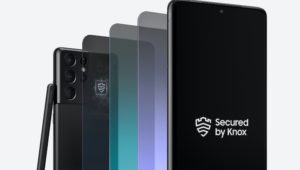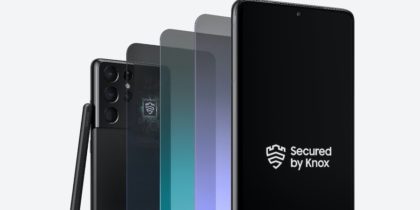As smartphones become an increasingly central part of our work lives, securing them is becoming ever more important. Traditional passwords present a significant painpoint, both for IT departments and the device user, who is required to remember unique and complex passwords for each of the online services they use. Too often this results in time-consuming password resets or, worse, the business is put at risk due to a hacked password that an employee has reused across multiple corporate log-ins. Fortunately, there is a better way: biometric security.
Not only does biometric security remove the need for users to remember complex passwords, it is much more secure and virtually impossible to replicate. Fingerprint sensors have already been available on smartphones for some time, but with the Galaxy S8 and S8+, Samsung has raised the bar again with iris scanning allowing users to “unlock with a look.”
Implementing biometric security on company devices and apps allows businesses to control employee credential access for sensitive networks or information. In future, we will be able to take advantage of biometrics in other areas too, including verifying identity, authenticating financial transactions, signing e-contracts and even replacing your passport.
With this new standard for security, today’s enterprise can further protect their sensitive information — integrating biometric security so it’s a natural part of the daily workflow.
Watch the video above or download our white paper on implementing biometric authentication.









